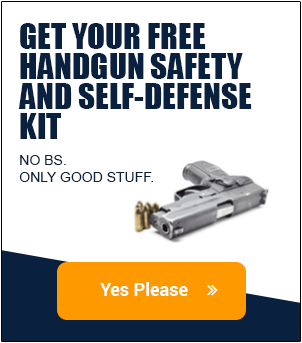In the recent shooting incident at a Texas church, a neighbor went to his home across the street from the church and returned to aim a long gun at the shooter. Yes, the armed citizen, Stephen Willeford, assisted in stopping or at least distracting the shooter. But not before the gunman had put bullets into 46 people. Even if you have your concealed weapon on you when an active shooter incident starts, a lot of damage may already be done before you get a chance to do anything about it.
Be aware of your exits.
Soft targets are where shooters are increasingly aiming for…churches, schools, movie theaters, concerts. These are places where a lot of people gather in one place. If you are in a place like this, look around you to be aware of your exits and anything that may block your way as you try to leave. Try to position yourself where you have access to a exit. Your first line of defense is to avoid the danger if you possibly can and move quickly away from the threat.
Block the shooter.
If you can’t avoid a shooter the next thing is to try to deny them access to wherever you are. Accomplish this by putting up barricades, turning off lights so the shooter can’t see, or some other method.
Engage the shooter.
Finally and only as a last resort is it recommended to engage a shooter by returning fire. And remember, whenever you pull out your gun you may inadvertently hit an innocent bystander. If you don’t feel that you can 100% accurately hit your target, it may be best to avoid the danger and leave the area.
Mentally prepare.
Experts recommend that you mentally prepare yourself by having a “script” in your mind for how you might respond to stressful situations like an active shooter scenario. Of course, there’s no way to predict what actual scenario you might face, but if you can walk through different scenarios and strategies, especially if you can relate them to where you are, that is helpful.
Don’t spend so much time thinking about an active shooter that you don’t enjoy the concert or movie, but do allow yourself to think of where your safe zones are, what you can safely hit from where you are, and how you will get away if there’s any danger.
Be aware of danger cues.
Another thing you need to do is pay attention to danger cues. Look around at how people are behaving near you. If you’re at a concert and the music stops, consider that a danger sign. If the crowd starts acting erratically, that’s a danger sign to look out for. Don’t be so intoxicated that you fail to notice these danger cues. Perhaps one of the easiest things to do to keep yourself and others aware is to know what gunfire sounds like. In the Las Vegas incident, people in the crowd said they thought they were hearing fireworks. Knowing what is happening around you is the first approach to getting out safely.
Don’t act like a threat yourself.
Remember, in an active shooter scenario, the police and other responders do not know who is a threat and who is not. Keep your gun holstered and your hands visible. If you do pull out your gun, re-holster it at your first opportunity and report to the police if you used your gun. Protect yourself by making it clear to the responders that you are not the threat. They can’t tell one person with a gun who is good or the other with a gun who is bad.

